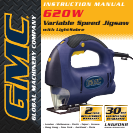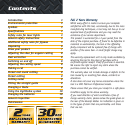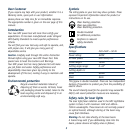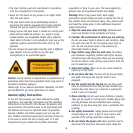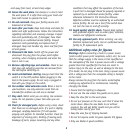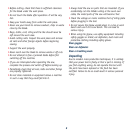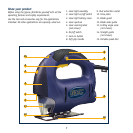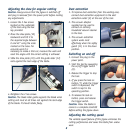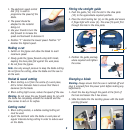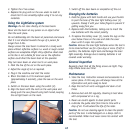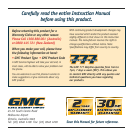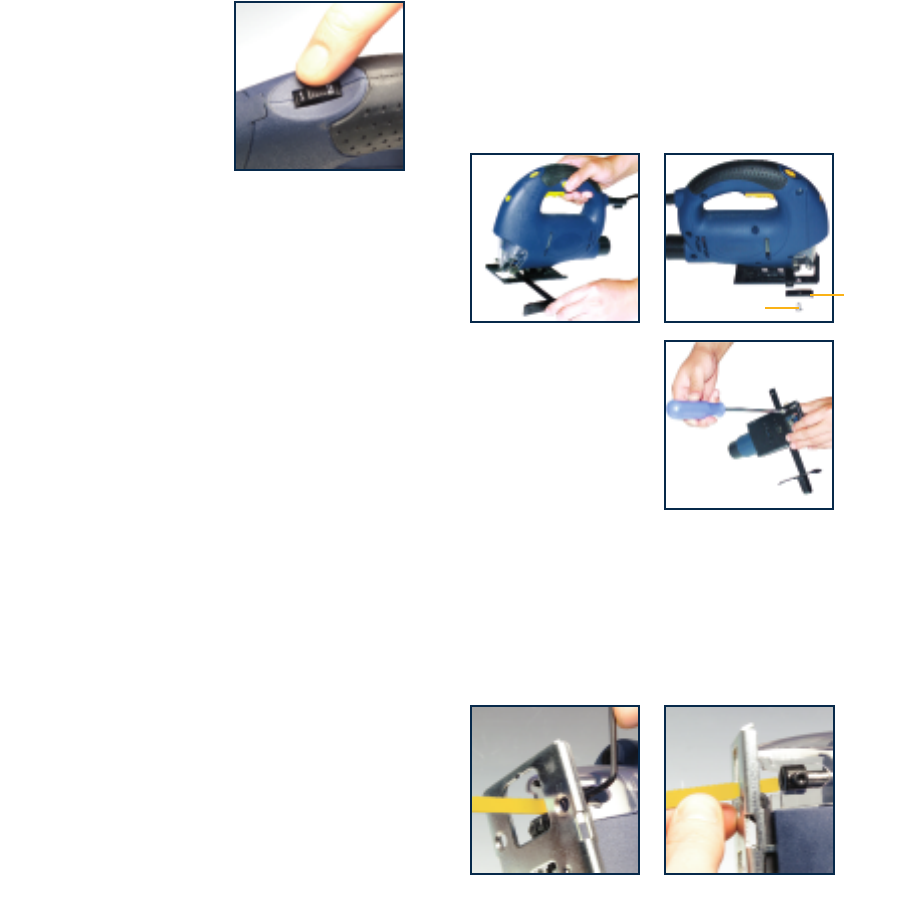
1. The electronic speed control
dial (15) is used to
programme the speed of the
blade.
2. The speed should be
adapted to the material
being cut.
3. Use your thumb to turn the
dial forward to increase the
speed and backward to decrease it.
4. Position “1” denotes the lowest speed. Position “6”
denotes the highest speed.
Making a cut
1. Switch on the jigsaw and allow the blade to reach
maximum speed.
2. Slowly guide the jigsaw forward using both hands,
keeping the shoe plate flat against the work piece.
3. Do not force the jigsaw.
Note. Use only enough pressure to keep the blade cutting.
Do not force the cutting, allow the blade and the saw to
do the work.
Pocket & round cutting
1. When starting a cut from the centre of a work piece,
drill a 12mm diameter hole to ensure that there is
clearance for the blade.
2. When cutting tight curves, reduce the speed of the saw.
Warning. Do not move the saw forward along its cut until
the blade has completely entered the material and the
shoe comes to rest on its surface.
Cutting metal
1. When cutting metals, a suitable cooling/cutting oil
must be used.
2. Squirt the lubricant onto the blade or work piece at
regular intervals during cutting in order to reduce wear
on the blade.
Fitting the straight guide
1. Push the guide (14) into the slot in the shoe plate
(10) to the approximate required position.
2. Place the short locking bar (a) on the guide and secure
it finger-tight with screw (b). The screw fits point first
through the hole in the shoe plate.
3. Position the guide precisely
where required and tighten
the screw.
Changing a blade
Warning. Always ensure that the saw is switched off and
plug is removed from the power point before making any
adjustments.
1. Insert the hex key through the guard at the front of
the tool and loosen the 2 hex screws.
2. Slide the blade into the locating groove with the teeth
pointing forward.
9
a
b



